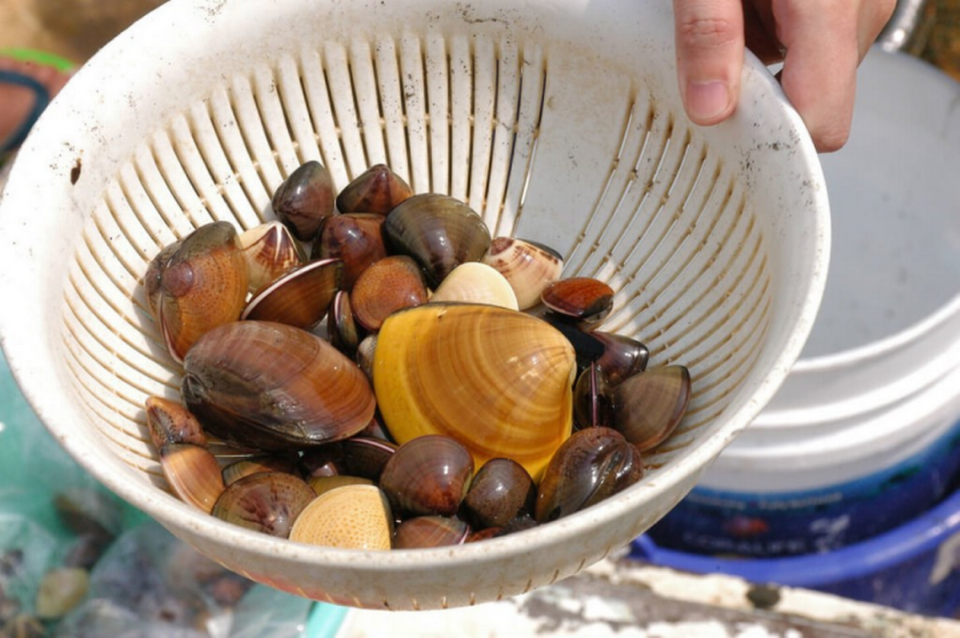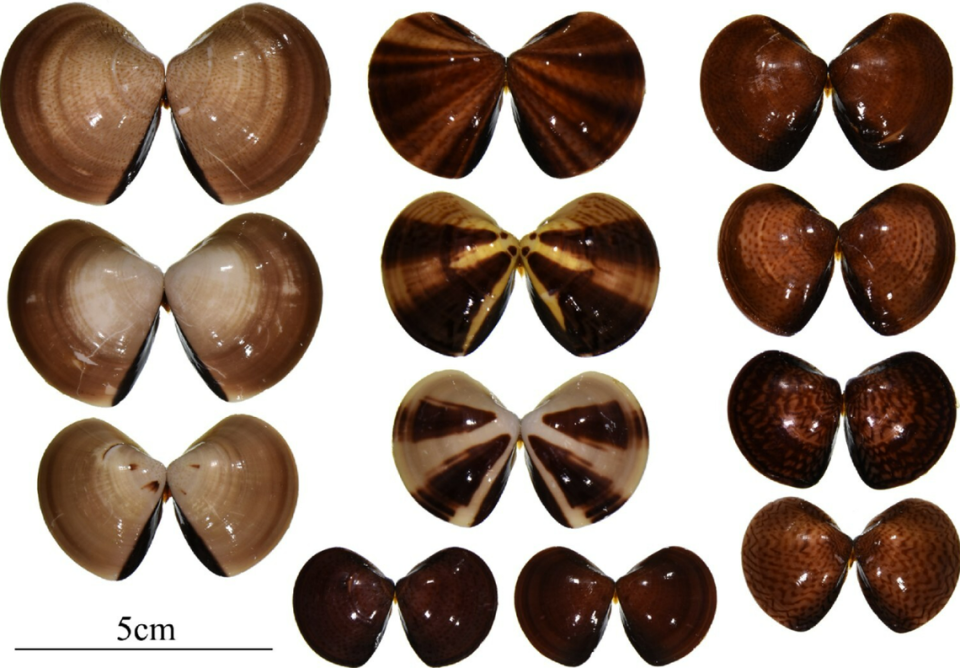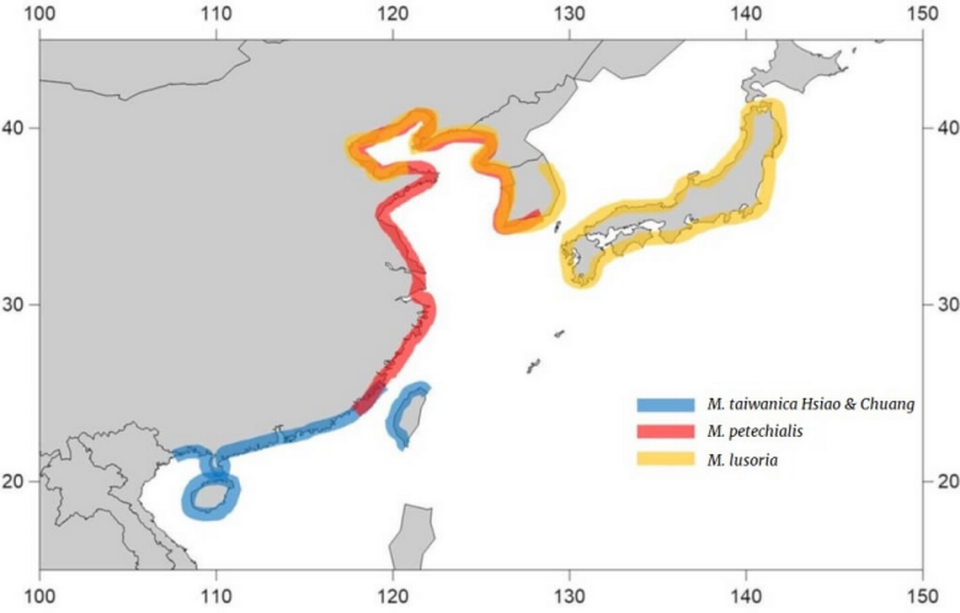New species was hiding in plain sight and being raised on Taiwanese farms, experts say
Scraping the bottom of a river in Taiwan with a long-handled rake, a fisherman harvested clams. The hard-shelled, medium-sized creatures were tossed into a bucket. The harvest would end up at a market and, eventually, a dinner plate.
As farming made clams a mundane sight across Taiwan, these brown mollusks had their own secret — one hiding in plain sight, as researchers recently discovered.
The clam species cultivated across Taiwan “has been identified as (Meretrix) lusoria for almost a century,” according to a study published March 30 in the Molluscan Research journal. This mollusk species “originated in Japan and was introduced to Taiwan during the Japanese colonial period,” researchers said.
Fishermen along the Tamsui River noticed the clam population declining in recent years and contacted authorities for help, Taiwan’s Central News Agency reported on April 10.

Researchers collected some clams from the river and took them to a lab, the study said. After analyzing the specimens, they realized these clams looked like Meretrix lusoria but their DNA did not match.
They stumbled upon a new species of clam, Meretrix taiwanica, the study said.
Analyzing a variety of clam species found in Southeast Asia and older specimens held in museums across Taiwan, the researchers untangled a century-long case of mistaken identity.
The Meretrix lusoria clams introduced by Japan did not become widespread. Instead, the species failed to adapt to Taiwan’s environment and died off, Taiwan’s Overseas Community Affairs Council said in a news release.
Ever since, Taiwanese farmers have been cultivating Meretrix taiwanica clams, Taipei Times reported. These native clams looked similar enough to the species introduced by Japan that no one noticed the difference, the study said.
Meretrix taiwanica clams are “highly variable” in color, researchers said. Photos show this variety. Their shells can take a lighter white-yellow color, a “reddish-brown” color, “dark green” color and brown color, the study said.

But DNA analysis revealed that the Meretrix taiwanica clams differed from Meretrix lusoria clams “by 9.53 percent,” the news release said. This far exceeds the general standard requiring animals to have 2 percent to 3 percent difference in DNA to be considered distinct species, co-author Hsiao Sheng-tai said in the release.
Researchers concluded that although the three clam species commonly found in this region look similar, each has “distinct geographical distributions.” The once-mistaken “Meretrix lusoria is mainly distributed in Japan and South Korea” while Meretrix taiwanica is found in Taiwan, “the southern coast of China (and) northern Vietnam.”
A color-coded map shows the distribution of these different clam species.

After hiding in plain sight for almost a century, a native Taiwanese clam species is finally getting the recognition it deserves.
The Tamsui River is in northern Taiwan and flows through the capital city of Taipei..
Google Translate was used to translate the article from Taiwan’s Central News Agency.
‘Intriguing’ reports of cave-dwelling creature led to discovery of new species in India
Four ribs sticking out of forest floor lead students to massive discovery in Taiwan
Strange-looking bird didn’t move for three days. Then PA rescuers got a surprise
